Cacao Ceremony: Everything You Need To Know
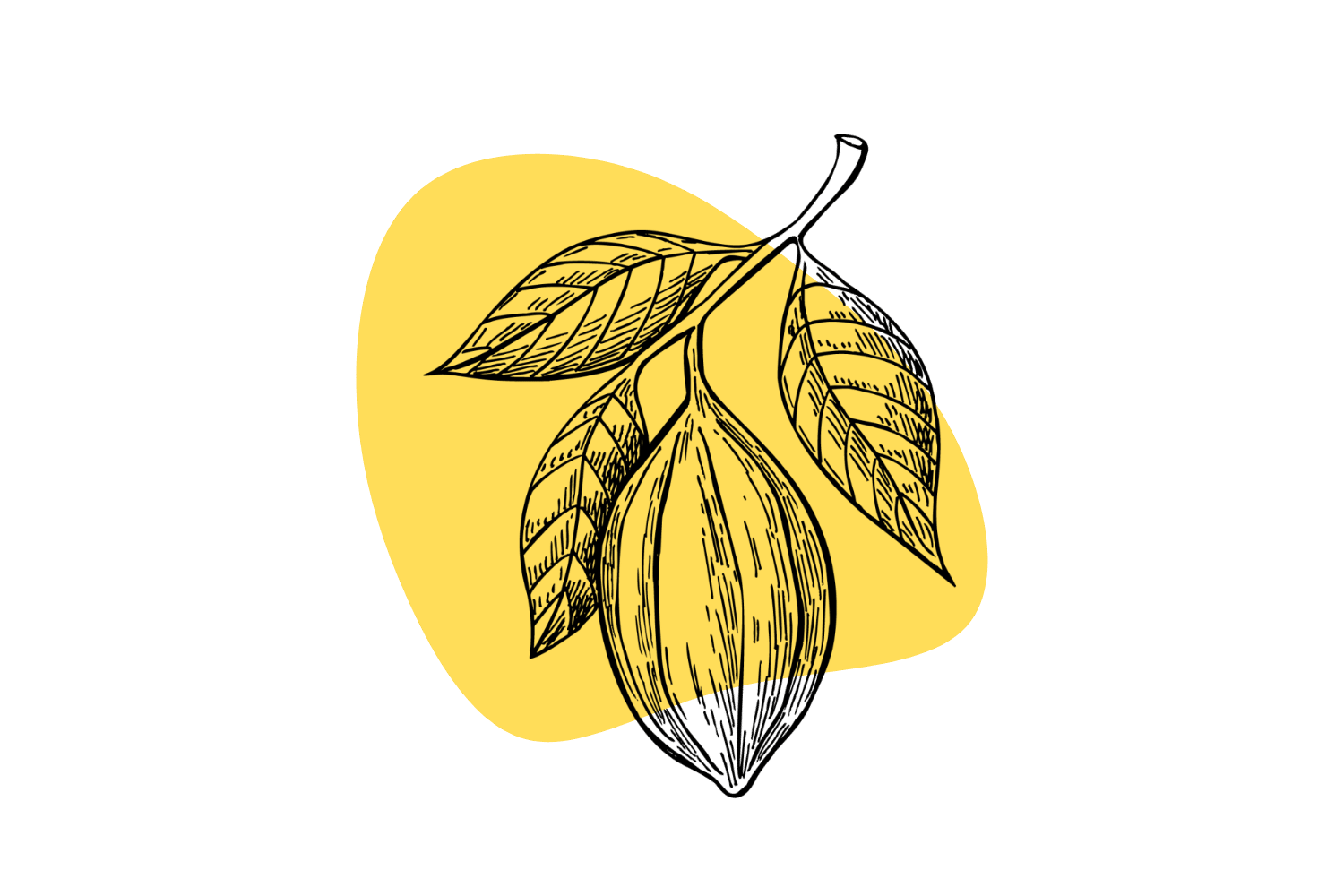
Cacao is made from the seed of the chocolate tree. Specifically, it refers to a preparation made from the seeds contained inside the chocolate pods. Chocolate is made by combining the cacao powder with the cocoa butter derived from other parts of the chocolate pods.
Unlike chocolate, cacao is bitter and unpalatable. It’s used as a powerful health beverage and superfood due to the exceptionally high concentration of antioxidants and other health-promoting compounds.
The cacao ceremony serves the same role as the peyote ceremony in supporting self-growth and development.
The difference is that it’s able to do it without taking you on a psychedelic trip. This makes cacao much more approachable and appropriate for daily use.
You could say cacao holds the door open for you — rather than pushing you through it.
In this article, we’ll cover everything you need to know about cacao and the cacao ceremony. We cover the difference between cacao, cocoa, and dark chocolate, along with some tips for using ceremonial cacao effectively.
In the end, I’ll offer some suggestions on where to find ceremonial-grade cacao so you can get started with the practice yourself.
What is Cacao?
The cacao tree (Theobroma cacao) produces large fruits — called pods. These pods contain small, bitter seeds called cacao beans.
Cacao has a wealth of health benefits. It’s used to protect the heart and brain from oxidative damage, reduce inflammation, promote focus and concentration, and support various mood disorders.
A cacao ceremony is a practice of drinking cacao for the purpose of self-growth. It’s thought to create the conditions necessary to have ego-dissolution experiences, reach deeper levels of meditation, and feel more connected with other people.
When we talk about the health benefits of cacao or cacao ceremonies, we’re referring specifically to the pure cacao seeds rather than chocolate or cocoa, which are made by processing the cacao seeds with oils and sweeteners.
The flavor of cacao is very different from chocolate. It’s highly bitter and has stimulating and euphoric qualities. Chocolate lacks these qualities and isn’t suitable for use in a proper cacao ceremony.
Cacao is primarily used as a health beverage and for the purpose of self-growth and spiritual development.

What’s The Difference Between Cocoa, Cacao, & Chocolate?
Cacao is the precursor for cocoa. It’s made from the raw seeds of the cacao pod before it’s roasted and mixed with cocoa butter — which is the fat derived from the rest of the cacao pod.
Cacao contains a much higher concentration of polyphenols, tryptophan, and xanthine alkaloids than cocoa — but also has a strong bitter taste.
Cocoa is mixed with sweeteners, other fats, and dairy products to make chocolate.
There are three different types of chocolate:
- Dark chocolate — contains a higher concentration of cacao (35–80% cacao)
- Milk chocolate — made by combining cocoa powder with condensed milk, sugar, and butter (10–12% cacao)
- White chocolate — made only from the cocoa butter, sweeteners, and dairy products (does not contain cacao)
The cacao used ceremonially is different from chocolate — yes, even dark chocolate. It usually contains between 90 and 99% cacao by weight without any added sugar, dairy, or fat. It’s also important for the cacao to be sourced ethically and processed without roasting for it to be considered “ceremonial grade.”
What Are The Benefits of Cacao?
Cacao has many health benefits, most of which come from the physical ingredients in the cacao seed — such as magnesium, theobromine, tryptophan, zinc, iron, and a variety of polyphenols.
Other benefits come from the ceremony and meditation that accompany traditional cacao drinking — such as stress reduction, mindset development, and a greater sense of empathy and connection with the self and others.
The main goal of a cacao ceremony is to develop a deeper connection with the self.
Outside of ceremonial use, cacao offers benefits through its stimulating and mood-enhancing effects and from the rich concentration of trace minerals, vitamins, and antioxidants.
The benefits of cacao include:
- Increases mental & physical energy
- Induces a mild euphoric state
- Improves focus & creativity
- Makes us feel more connected with others
- Highly nutritive (rich in zinc, magnesium, and iron)
- Natural source of tryptophan & anandamide
- Protects the cells from oxidative damage
- May lower blood pressure
- Protects the heart & brain
- Regulates blood sugar & insulin levels
- May offer some protection against certain kinds of cancer
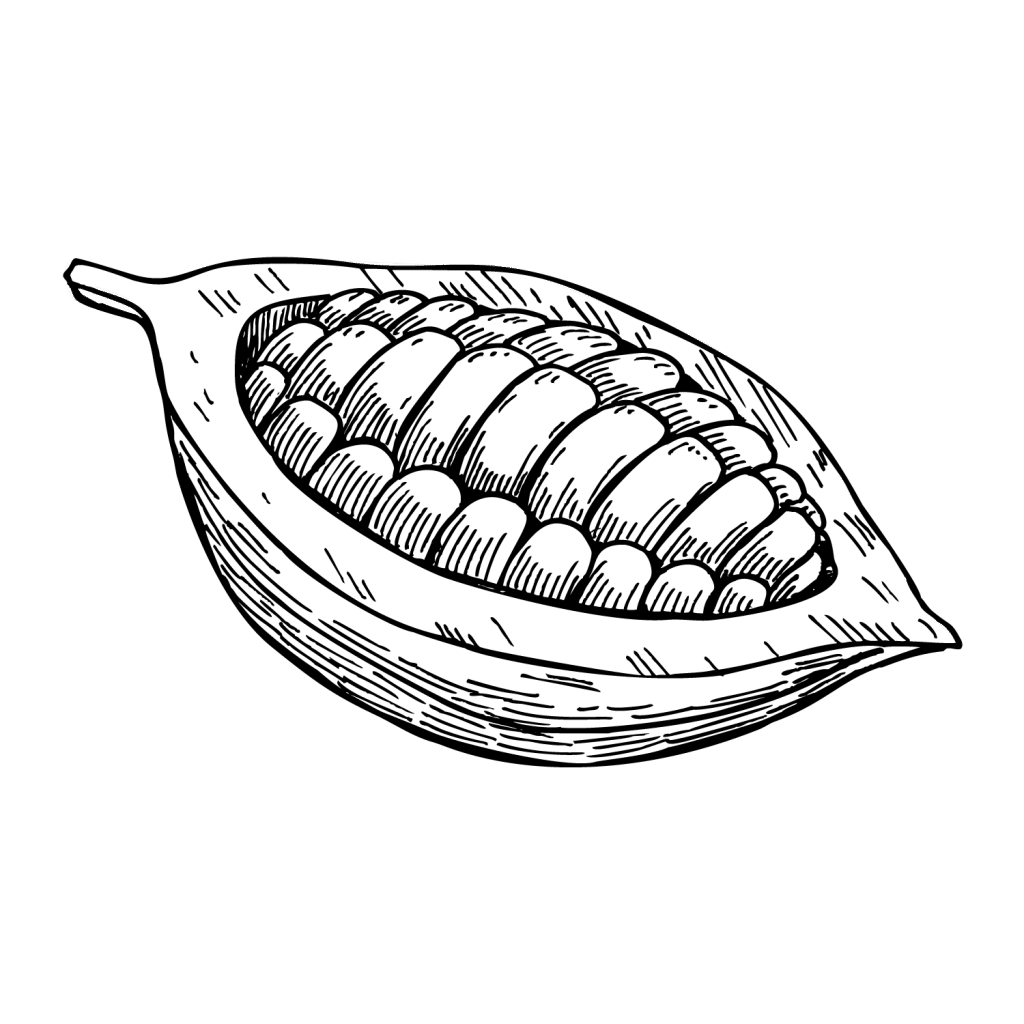
What’s The Dose of Cacao?
The standard ceremonial dose of cacao is 40 grams (1.5 oz) of raw cacao.
The ideal dose may be different for you, so start with a smaller dose if this is your first time. Some people are sensitive to cacao and may feel uncomfortable side-effects like anxiety, dizziness, high blood pressure, nausea, or a rapid heart rate.
Start at a smaller dose of around 15 grams, and only take more if it feels right for your body:
- 15 mg Cacao — Low dose. This dose is best for beginners, people who are sensitive to cacao, or those that tend to experience difficulties breaking down fats.
- 30 mg Cacao — Intermediate dose. This dose is ideal for social gatherings.
- 40 mg Cacao — Full ceremonial dose. This is considered the standard ceremonial dose.
- 50+ mg Cacao — Strong dose. It’s only recommended for experienced cacao drinkers.
What Does Cacao Feel Like?
Cacao isn’t considered psychoactive in the traditional sense. It won’t make you feel high, and it doesn’t induce an altered state of consciousness.
Most people report feeling blissful and euphoric while drinking cacao. They feel as though they can enter flow states more easily, experience a greater level of connection with others, and may feel a burst of energy.
While cacao is a stimulant, it feels different from other stimulants like caffeine. You feel like you have more energy but without the anxious or jittery side effects.
The active ingredient, theobromine, is a mirror image of caffeine’s molecular structure. It provides many of the same stimulating effects that promote increase mental alertness, focus, and creativity — but with some differences.
Cacao also contains a compound called anandamide — which is often referred to as the “bliss molecule.” This compound works to regulate homeostasis via the endocannabinoid system (which is also the target for CBD from cannabis plants).
The anandamide content in cacao is thought to provide most of the euphoric and “heart-opening” effects from drinking cacao.
How Long Does Cacao Last?
The effects of cacao take about 20 to 30 minutes to appear and usually last around 3 to 5 hours in total. The more you drink, the longer it lasts.
About The Cacao Plant (Theobroma cacao)
The cacao tree (Theobroma cacao) — aka the chocolate tree — grows in tropical rainforests throughout Southern Mexico, Central America, and the Amazon rainforest.
It’s considered an understory plant — which means it prefers growing beneath the cover of large canopy trees where it’s cooler and darker.
This tree grows to a height of around 5 meters (16 feet) and sports small, reddish flowers. These flowers appear consistently throughout the year and develop into a yellow or red-colored fruit. This fruit is what cacao and chocolate are made from.
The seeds of the plant are high in fat (40–60%) and about 2% theobromine — which is responsible for the stimulating effects of the plant.
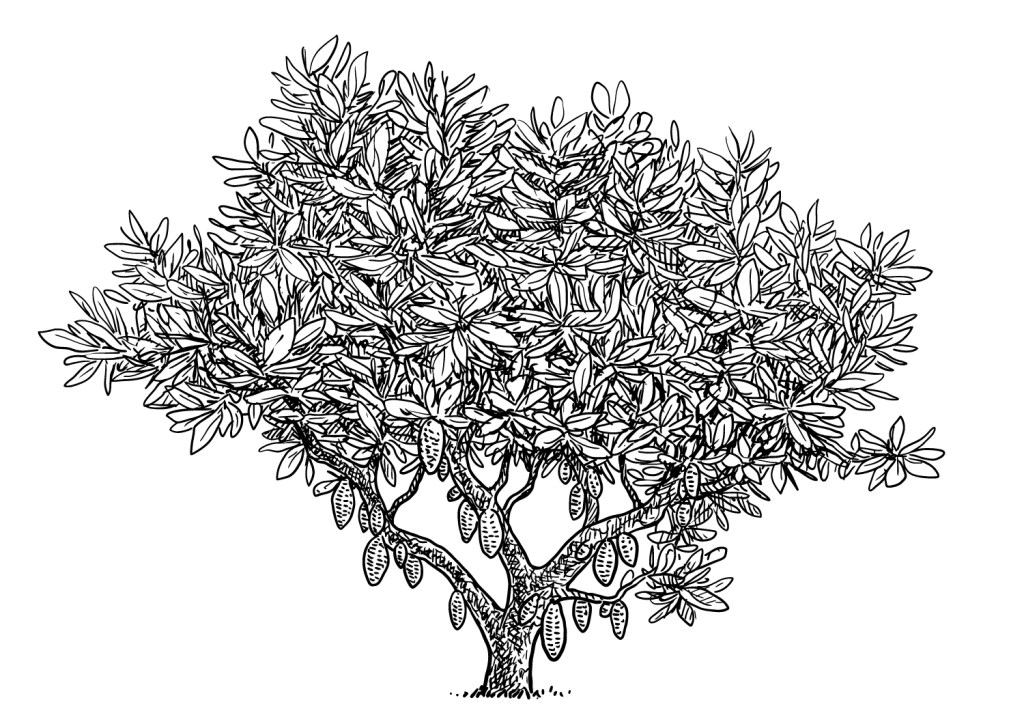
What Are The Active Ingredients of Cacao?
The active ingredients of cacao can be separated into three groups:
- Antioxidants — including epicatechin, catechin, and procyanidins
- Xanthine Alkaloids — including caffeine & theobromine
- Minerals & Nutrients — including magnesium, calcium, iron, & zinc
- Neurochemical Precursors — including tryptophan, phenethylamine, tyramine, tryptamine, tyrosine, & anandamide
The xanthine alkaloids are a class of central nervous stimulants related to caffeine. Although cacao contains caffeine, the total concentration is very low. The most abundant ingredient is theobromine, which is a mirror image of caffeine. It activates the adrenergic receptors like caffeine but in a slightly different way.
Theobromine is a stimulant, but its effects are more subtle and less likely to lead to anxiety or jitteriness compared to caffeine. It also has a higher affinity for widening the airways to allow for more air to flow into the lungs.
The third group, vitamins and minerals offer health benefits through nutritional support. Cacao is particularly high in iron and magnesium. Iron is required for red blood cell production, and magnesium serves as a cofactor for over 300 individual enzymatic reactions. We need magnesium to make hormones, neurotransmitters, bones, skin cells, and much more.
Cacao is also particularly rich in polyphenols — such as catechins and anthocyanidins. Most of these polyphenols have well-known antioxidant or anti-inflammatory properties.
A 100 gram serving of ceremonial cacao contains:
- Polyphenols — 11–13%
- Theobromine — 2–3%
- Caffeine — 0.2%
- Magnesium — 272 mg
- Sugars — 6.3 grams
- Fiber — 12.7 grams
- Iron — 9.1 mg
- Calcium — 888 mg
- Zinc — 3.3 mg
The Cacao Ceremony: What Is It & Why Should I Be Interested?
Cacao has a long history of ceremonial use. It was used for healing and ritual — as a way to connect with a higher state of health and conscious awareness.
The cacao ceremony serves a similar purpose to more conventional psychoactive substances such as ayahuasca, peyote, or magic mushrooms. But it achieves similar results without forcing you into a psychedelic experience. Cacao is much more subtle and can be used on a daily basis.
Instead of inducing ego death and dissolution or forcing a sense of presence and connection, cacao merely sets up the conditions we need to reach these experiences on our own.
The cacao ceremony is a big part of this. Drinking cacao can increase energy and focus, but there’s so much more depth to this practice when used alongside some sort of ritual and intention-setting.
Cacao ceremonies were practiced by the Mayan, Aztec, and Olmec civilizations for thousands of years. The practice continues today, but it looks much different now. Many people who engage in cacao ceremonies employ other techniques to the practice as well, such as breathwork, yoga, meditation, and journaling.
The point of using cacao ceremonially is to establish a habit or ritual around its use. The goal is to improve overall health and well-being, reach deeper levels of meditation, and offer a tool for self-growth and development in almost all aspects of life.
Some people use cacao as part of their routine to enter deeper flow states with work or creative endeavors or to help develop a better mindset and live more presently. This practice complements the use of psychedelics, meditation, and other techniques people are using as a means of self-growth and discovery.
History of the Cacao Ceremony
The Latin name for the cacao tree theobroma literally translates to “food of the gods.” This is an homage to how the plant was viewed by the civilizations that used it.
Most of the history we have available on cacao’s traditional uses comes from the Southern regions of Mexico and Central America. The Aztecs were especially fond of the plant and were reported to have used the seeds as a form of currency at one point.
Archeological research suggests the Aztecs, Maya, and Olmec civilizations have been consuming cacao since at least 600 BCE [1] — but many scholars believe it was much earlier than this.
The word “chocolate” comes from the Aztec word chocolatl — which referred specifically to the preparation the Aztecs used at social celebrations and rituals. It was often mixed with other local herbs like vanilla and damiana as an aphrodisiac.
A famous Aztec emperor, Moctezuma, was reported to consume as much as 50 cups of chocolate a day. He was known to have many wives and mistresses. Many people believe his healthy libido was at least in part the result of his frequent chocolate consumption.

How to Prepare Cacao
Preparing cacao follows the same basic recipe as making a cup of hot chocolate. The only difference is that you’re using raw cacao instead of using a chocolate mix.
Ceremonial cacao involves a specific type of cacao, which usually comes in the form of a bar or ceremonial disks. This form is going to be difficult to mix with water using a spoon like you normally would when making hot chocolate. Instead, you’ll want to use a blender or traditional molinillo to get all the ingredients to mix with the water and add some froth to the brew.
Most people who prepare cacao add a few other ingredients as well. This might include some sweeteners to cut some of the bitter taste of the cacao seeds or other herbs to add further health benefits.
There’s an endless variety of recipes available for preparing cacao, and there’s really no right or wrong way to do it.
You can add whatever you want to the mix. I encourage you to try different recipes and ingredients to see what works best for you. I usually add a pinch of cayenne, vanilla extract, a pinch of salt, and about 5 mL (1 tsp) of honey to sweeten.
Instead of using hot water you can also use herbal tea. Damiana or passionflower tea are my favorites — both of which offer unique synergy to the effects of the cacao itself and have a long history of use by Mesoamerican cultures.
What You’ll Need to Get Started
- Ceremonial grade cacao (pure cacao) — aim for around 15–40 grams (0.5–1.5 oz) per serving
- Hot water — add around 250 mL (1 cup) per serving
- Sweetener of your choice (optional) — maple syrup, sugar, monk fruit, or honey work great (~1 tsp per serving)
- Additional herbs of your choice (optional) — cayenne or chili peppers, vanilla, ashwagandha, maca, mesquite, or cinnamon are common additions
- Salt or other spices — Himalayan sea salt, nutmeg, or cardamon are often used
Directions:
Mix all the ingredients together in a large bowl or blender. You can use the ceremonial molinillo to vigorously mix the herbs together. This can take up to 10 minutes of mixing to get everything to dissolve evenly dissolved in the water.
For convenience, I usually use a blender. Mix everything together inside the blender for a minute or two to make sure it’s all evenly dissolved.
Pour into individual servings and sweeten to taste.
What Other Herbs Should I Add To Cacao?
A cacao ceremony is really about intention, so deciding what else to add to the cacao really depends on what you hope to get out of it.
The idea is that the cacao is the dominant force — offering all its stimulating, meditative, and heart-opening qualities. The other herbs provide an additional force for some of the more specific benefits you’re hoping to achieve.
You can also add other herbs and spices to reduce bitterness.
Here are some ideas for other herbs to add to your cacao:
Passionflower
Passionflower is another species of plant found in the Amazon rainforest. It’s used for its aphrodisiac, mood-enhancing, and relaxing properties. This is a good addition if you’re using cacao for improving your mood or if you find cacao can make you feel a little bit anxious.
To add this herb, make a strong tea from the dried leaves and use this as the liquid base for mixing the cacao. You will need to let this herb steep in the water for at least 10 minutes to extract as many of the active ingredients as possible.
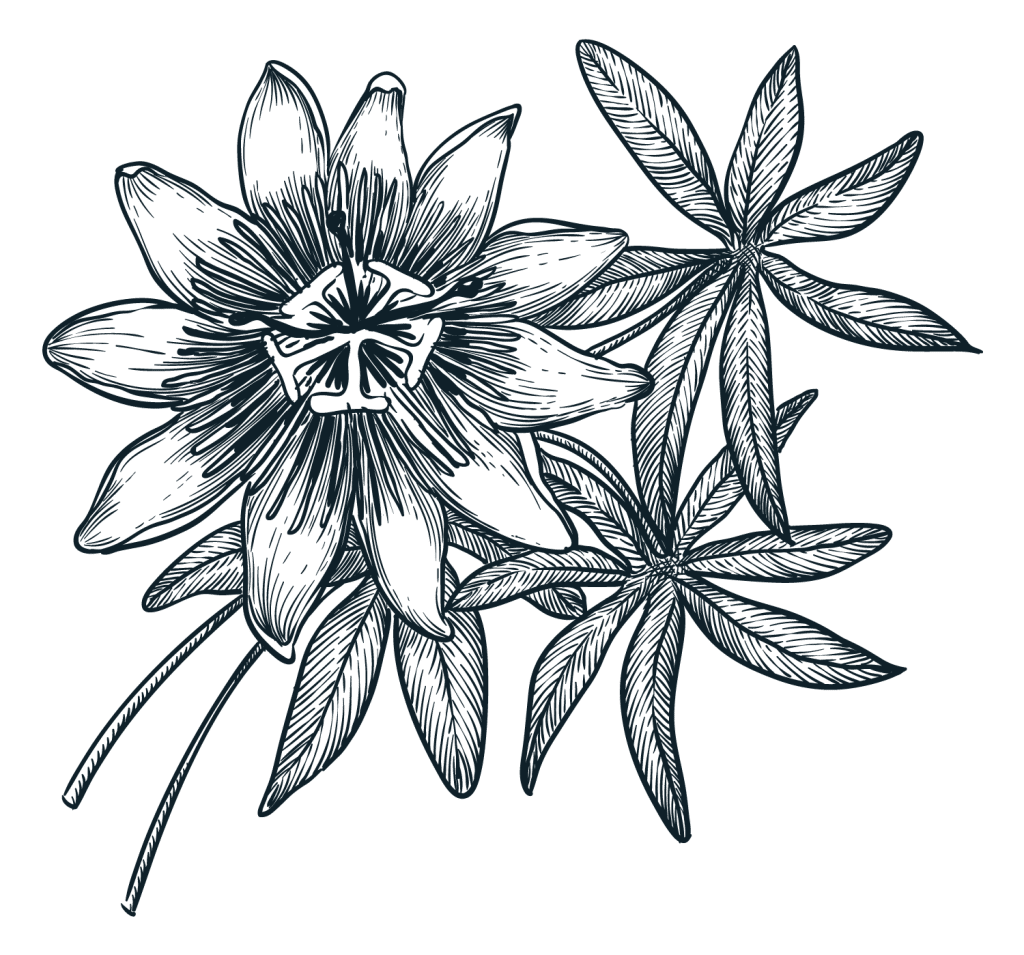
Vanilla
Vanilla is one of the standard ingredients in ceremonial cacao preparations. It serves two purposes. The main purpose is to cut some of the bitterness of the brew. The second is to add aphrodisiac qualities to the blend.
The vanilla orchid has long been heralded as one of the strongest natural aphrodisiacs in the plant kingdom.
To add this herb, use about 5 mL of vanilla extract per serving of cacao (15–30 grams).

Chili or Cayenne
A small amount of pepper is surprisingly effective at reducing the brew’s potent bitter flavor.
The capsaicin in hot peppers is also thought to improve the absorption of the cacao by stimulating blood flow to the digestive tract. The amount of cayenne or chili you add comes down to individual preference, but I recommend you start with a small amount and add little bits at a time until you get the flavor you want.
You can always add more cayenne, but it’s pretty difficult to take some away if you’ve added too much.
I usually add about 1 gram of cayenne per serving.
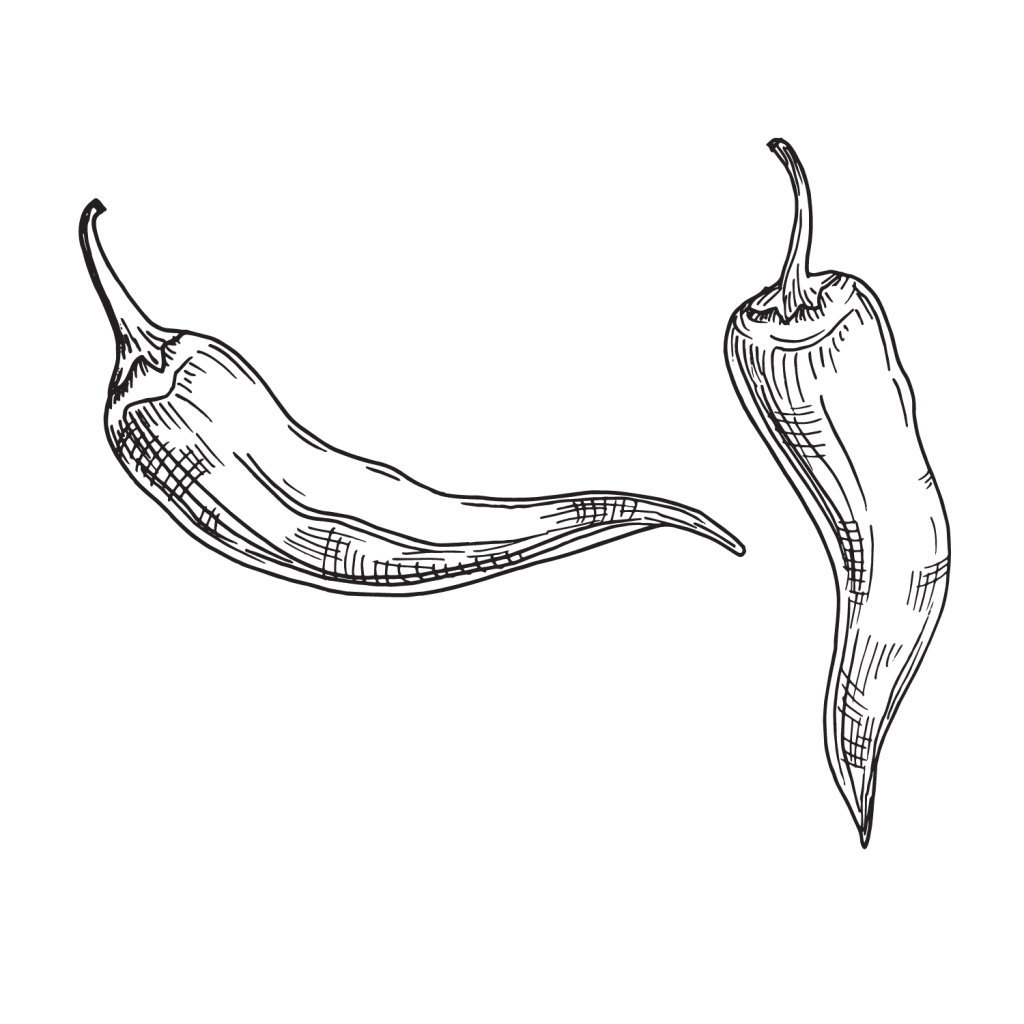
Damiana
Damiana (Turnera diffusa) has a long history of use in Mesoamerica as an aphrodisiac, anxiolytic, and sedative. It’s often mixed with cacao for the purpose of sexual exploration with a partner. Some add it to help offset side effects like jitteriness or anxiety that may come along with higher doses of cacao.
To use this herb, make a strong tea and use this as the liquid base for mixing the cacao. Use around 1 gram of leaf per serving (15–40 grams of cacao). Allow the tea to steep for at least 10 minutes before you use it to ensure as much of the active ingredients are extracted as possible.
Cinnamon
Cinnamon (Cinnamomum verum) is a common addition to cacao for the same reasons as cayenne or chili. The subtle spicy flavor cuts out a lot of the bitterness of the cacao seeds themselves and works to stimulate blood flow in the gut to improve absorption of the other active ingredients.
Cinnamon is especially useful for boosting the blood sugar-regulating effects of cacao. It’s useful for promoting more sustained energy levels by regulating blood glucose levels throughout the day.
To add cinnamon, you can add about 5 mg (1 teaspoon) of powder directly to the cacao mixture.

Health Benefits of Cacao: What The Research Says
Cacao has many health benefits. It’s classified as a superfood, and there are a lot of proponents suggesting it as a potential antidote to society’s issues with heart disease, stroke, Alzheimer’s disease, and more.
While cacao isn’t a cure-all, it does offer some distinct benefits with long-term use.
1. Cacao & Brain Health
Cacao is one of the richest sources of polyphenols in the world. Roughly 11 to 13% of the unfermented cocoa beans consist of potent antioxidant polyphenols. The deep purple color is caused by a particular group of polyphenols called anthocyanidins.
Polyphenols in cacao have been shown to offer a protective action on the brain and neurons. They work by reducing the burden of free radicals and oxidative molecules in the brain and have even been shown to support nitric oxide production in the brain to improve blood flow [8,9,10].
Summary: How Cacao Supports Brain Health
- Protects the neurons from oxidative damage
- May improve blood flow to the brain
- May reduce inflammation of the blood-brain barrier
2. Cacao For Heart Health
The Kuna Indians of Panama maintain some of the highest intakes of cacao per capita. One report suggested the average Kuna Islander consumes around three 10-ounce cups of ceremonial cacao every day [2]. The prevalence of certain cardiovascular diseases is notably low in this population — including high blood pressure (only 2.2%), diabetes, myocardial infarction, and stroke [3,4]. It’s believed the group’s high consumption of cacao and other naturally-occurring antioxidants plays a pivotal role in the low occurrence of heart disease in this particular population [5].
Other studies back up this idea. For example, a cross-sectional analysis of 2217 participants involved in a heart study found that participants who consumed the most chocolate had the lowest incidences of heart disease and arterial plaque formation [6].
The study found that participants who consumed chocolate (any form) two or more times per week were 32% less likely to have coronary artery calcification compared to those that didn’t eat any chocolate.
Summary: How Cacao Supports Heart Health
- Cacao mediates the bioavailability of nitric oxide in the endothelium to offset high blood pressure
- Cacao protects the vascular system from oxidative stress
- Cacao reduces inflammation in the vascular tissue
- Cacao regulate blood sugar levels, which can lead to oxidative damage & inflammation in the arteries [16]
3. Cacao For Inflammation
Cacao is well known to provide powerful anti-inflammatory benefits. This is one of the ways this plant medicine is able to offer so many widespread health benefits.
The anti-inflammatory profile of cacao is broad and diverse. It’s thought to provide much of the neuroprotective, mood-supportive, cardioprotective, and immunomodulating benefits of the plant.
There are plenty of studies to back this up, including experimental models [14], as well as clinical trials and meta-review studies [15].
The impressive anti-inflammatory effects of cacao are largely due to the polyphenols in the seeds. These potent antioxidants have been shown to inhibit both 5-lipoxygenase (5LOX) and dioxygenase [12] — both of which are key elements in the inflammatory process.
Cacao has also been shown to inhibit neutrophil oxidative burst, reduce the expression of adhesion molecules and plasma leukotrienes (part of the asthma response), modulate the synthesis of eicosanoids (chemical messengers), reduce NF-kB and TNF-a (primary inflammatory messengers), and mediate the inflammatory cascade at several different layers [13].
Summary: How Cacao May Support Inflammation
- Inhibits 5LOX
- Inhibits dioxygenase
- Inhibits NF-kB
- Inhibits TNF-a
- Reduces plasma leukotriene activity
- Inhibits neutrophil oxidative bursts
- Reduces the expression of adhesion molecules
4. Cacao & Mood
Cacao contains a compound called tryptophan — which is the precursor to the key mood-regulating neurotransmitter serotonin [17]. Other ingredients in cacao have been shown to block the enzyme that breaks down tryptophan — called indoleamine 2,3-dioxygenase (IDO) [20].
Through these effects, cacao is thought to upregulate tryptophan concentrations in the brain to improve depression, seasonal affective disorder, and a variety of other neuropsychiatric conditions.
Studies have shown that people with a major depressive disorder often have lower concentrations of L-tryptophan than healthy individuals [21].
Other mood disorders, such as seasonal affective disorder (SAD), have also been associated with low tryptophan [22]. Another compound, called neopterin, is also correlated with people suffering from various forms of depression or other mood disorders [23].
Cacao also contains a rich supply of other mood-supportive compounds — including anandamide, phenylethylamine, tyrosine, tryptamine, and tyramine.
It’s important to use unroasted cacao to get the full extent of the mood-supportive benefits. Fermented seeds have a higher concentration of these compounds, while roasted cacao has much lower levels.
Cacao also contains a relatively high concentration of magnesium [18]. This important element is intimately involved with the production of neurotransmitters necessary for regulating our mood — including dopamine, serotonin, and norepinephrine. Magnesium deficiencies have been linked with increased rates of depression [19].
Summary: How Cacao Helps To Support Mood
- Upregulates tryptophan concentrations
- May reduce neopterin levels
- Protects the brain from oxidative damage & inflammation
- Contains mood-supportive compounds such as anandamide and tryptamine
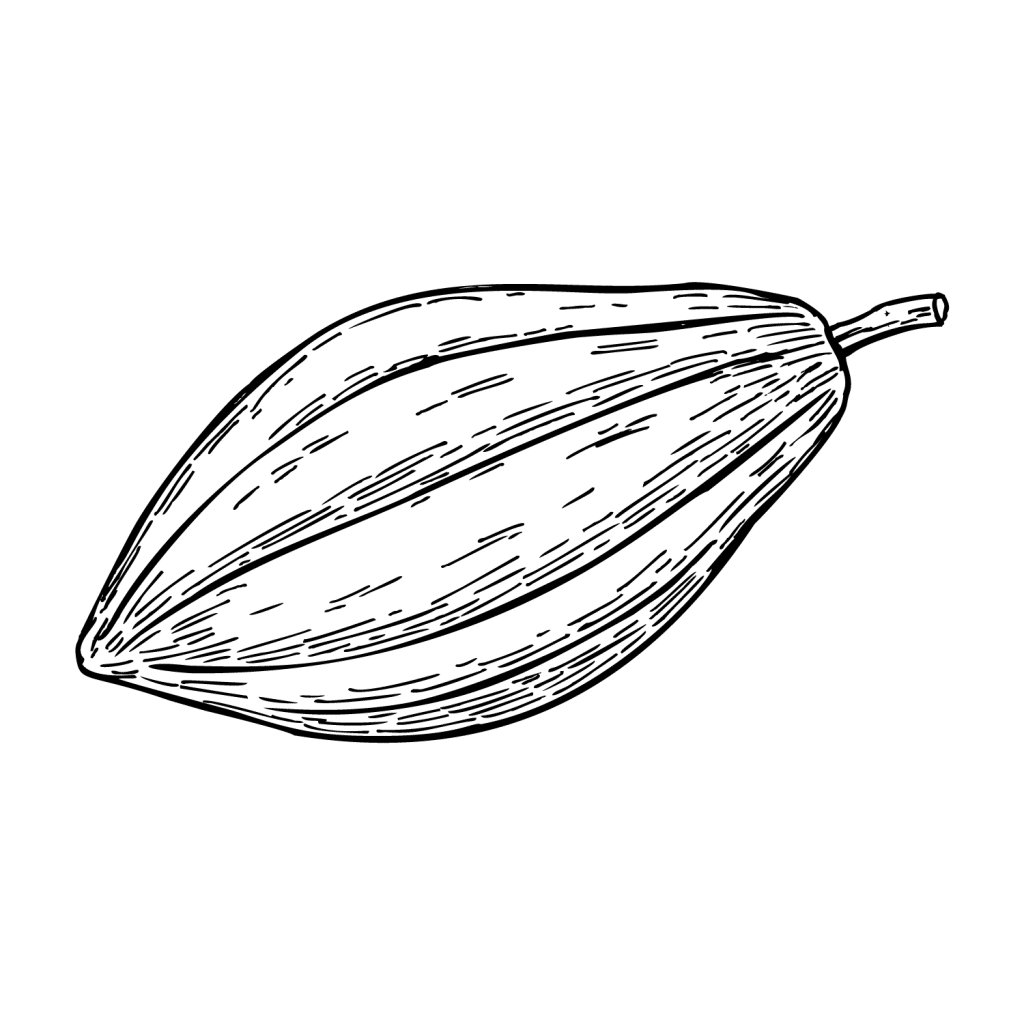
Frequently Asked Questions
1. What’s The Difference Between Ceremonial Cacao & Regular Dark Chocolate?
People who use cacao often emphasize the clear distinction between ceremonial-grade cacao and regular dark chocolate.
The characteristics needed to constitute “ceremonial cacao” include:
- Contains a very high potency of cacao (over 85%)
- Contains no added sweeteners or binding agents
- The cacao seeds were sun-dried instead of roasted
- The cacao seeds need to be ethically sourced
While it’s possible to find dark chocolate that meets these criteria — it’s very rare to find. Raw, unsweetened cacao is extremely bitter and not the type of product people tend to seek as a snack. You’ll only really find this from sources selling cacao specifically for the purposes of the cacao ceremony.
2. Is Cacao Addictive?
Anything can be addictive, but it’s not common for people to become addicted to cacao.
Chocolate has a rap for being very addictive. It’s one of the most common substances people reach for when they’re craving something. One study from 2010 found that people with higher rates of depression were more likely to consume chocolate than those without depression [7].
But it’s not the cacao itself people are craving. In most cases, it’s a combination of the sugar in milk chocolate or one of the trace minerals in dark chocolate that people crave. Some theories suggest people with mood disorders, crave chocolate because their body knows it can help increase tryptophan levels. Others may crave it for its source of iron and magnesium.
3. What Are Cacao Nibs?
A cacao nib is just a form of cacao that’s been molded or cut into smaller pieces. In theory, cacao nibs are the same as a raw block of cacao or cacao powder — but there are some differences with most of the cacao nibs on the market.
Cacao nibs are usually used in cooking, so most manufacturers will add a little bit of sweetener to them to cut some of the bitterness. You can technically use cacao nibs for a cacao ceremony, but you should avoid the stuff sold at your local supermarket and go for ceremonial grade cacao nibs instead.
4. Will Cacao Make Me High?
Cacao contains a mildly psychoactive compound called theobromine — which is a mirror image of the caffeine molecule. The effects are very similar to caffeine and, in higher concentrations, can produce a very mild “buzz.” Cacao doesn’t make you feel high, but it can make you feel like you’re in a flow state. It allows you to focus much more intently and feel a higher degree of mental stimulation or energy.
Other aspects of cacao can produce a mild euphoric feeling. I wouldn’t describe this feeling a high — it’s more of a mild buzz than anything else.
5. Where Does Cacao Grow?
The cacao tree (Theobroma cacao) grows in the same regions as coffee (Coffea arabica) but at lower altitudes. You can find this plant growing in most tropical rainforest regions of the world — including tropical regions of South America, Central America, Mexico, Africa, India, Indonesia, and Polynesia.
The cacao tree originated from the Amazon rainforest but has the most traditional use by various cultures residing in Mexico. Today, there’s a lot of demand for cacao, which has prompted farmers living in all parts of the tropics to begin cultivating the plant.
7. What Ceremonial Cacao Brands Should I Use?
There are a lot of different brands selling ceremonial cacao. It doesn’t matter too much where you order it from as long as it’s “ceremonial grade.” There’s also a lot of ethical concerns to keep in mind. The cacao trade is notoriously problematic for the local communities that grow it — so it’s important to order from brands that give back to these communities and compensate them appropriately for growing the cacao.
Many people who drink cacao also suggest the Criollo or Trinitario to be the best overall. Forsatero beans are generally cheaper and still produce excellent results.
Here are some of my favorite sources of ceremonial cacao to consider:
Subscribe To Get a Weekly Dose of Psychedelics In Your Inbox
References Cited In This Article
- Zainal Baharum, Abdah Md Akim, Yun Hin Taufiq-Yap, Roslida Abdul Hamid, and Rosmin Kasran. (2014). In Vitro Antioxidant and Antiproliferative Activities of Methanolic Plant Part Extracts of Theobroma cacao. Molecules. 19. 18317-18331
- Katz, D. L., Doughty, K., & Ali, A. (2011). Cocoa and chocolate in human health and disease. Antioxidants & redox signaling, 15(10), 2779-2811.
- Hollenberg, N. K., Martinez, G., McCullough, M., Meinking, T., Passan, D., Preston, M., … & Vicaria-Clement, M. (1997). Aging, acculturation, salt intake, and hypertension in the Kuna of Panama. Hypertension, 29(1), 171-176.
- Hollenberg, N. K., Fisher, N. D., & McCullough, M. L. (2009). Flavanols, the Kuna, cocoa consumption, and nitric oxide. Journal of the American Society of Hypertension, 3(2), 105-112.
- McCullough, M. L., Chevaux, K., Jackson, L., Preston, M., Martinez, G., Schmitz, H. H., … & Hollenberg, N. K. (2006). Hypertension, the Kuna, and the epidemiology of flavanols. Journal of cardiovascular pharmacology, 47, S103-S109.
- Djoussé, L., Hopkins, P. N., Arnett, D. K., Pankow, J. S., Borecki, I., North, K. E., & Ellison, R. C. (2011). Chocolate consumption is inversely associated with calcified atherosclerotic plaque in the coronary arteries: the NHLBI Family Heart Study. Clinical Nutrition, 30(1), 38-43.
- Rose, N., Koperski, S., & Golomb, B. A. (2010). Mood food: chocolate and depressive symptoms in a cross-sectional analysis. Archives of internal medicine, 170(8), 699-703.
- Sokolov, A. N., Pavlova, M. A., Klosterhalfen, S., & Enck, P. (2013). Chocolate and the brain: neurobiological impact of cocoa flavanols on cognition and behavior. Neuroscience & Biobehavioral Reviews, 37(10), 2445-2453.
- Sorond, F. A., Lipsitz, L. A., Hollenberg, N. K., & Fisher, N. D. (2008). Cerebral blood flow response to flavanol-rich cocoa in healthy elderly humans. Neuropsychiatric disease and treatment, 4(2), 433.
- Fernell, M., Swinton, C., & Lukowiak, K. (2016). Epicatechin, a component of dark chocolate, enhances memory formation if applied during the memory consolidation period. Communicative & integrative biology, 9(4), 816-23.
- Zuckerkandl, E., & Pauling, L. (1965). Evolutionary divergence and convergence in proteins. In Evolving Genes and proteins (pp. 97-166). Academic Press.
- Schewe, T., Kühn, H., & Sies, H. (2002). Flavonoids of cocoa inhibit recombinant human 5-lipoxygenase. The Journal of nutrition, 132(7), 1825-1829.
- Selmi, C., Mao, T. K., Keen, C. L., Schmitz, H. H., & Gershwin, M. E. (2006). The anti-inflammatory properties of cocoa flavanols. Journal of cardiovascular pharmacology, 47, S163-S171.
- Oyeleke, S. A., Ajayi, A. M., Umukoro, S., Aderibigbe, A. O., & Ademowo, O. G. (2018). Anti-inflammatory activity of Theobroma cacao L. stem bark ethanol extract and its fractions in experimental models. Journal of ethnopharmacology, 222, 239-248.
- Ellinger, S., & Stehle, P. (2016). Impact of cocoa consumption on inflammation processes—A critical review of randomized controlled trials. Nutrients, 8(6), 321.
- Corti, R., Flammer, A. J., Hollenberg, N. K., & Lüscher, T. F. (2009). Cocoa and cardiovascular health. Circulation, 119(10), 1433-1441.
- Nehlig, A. (2013). The neuroprotective effects of cocoa flavanol and its influence on cognitive performance. British Journal of clinical pharmacology, 75(3), 716-727.
- Burridge, J. C., Lockard, R. G., & ACQUAYE, D. (1964). The levels of nitrogen, phosphorus, potassium, calcium and magnesium in the leaves of cacao (Theobroma Cacao L.) as affected by shade, fertilizer, irrigation, and season. Annals of Botany, 28(3), 401-418.
- Derom, M. L., Sayón-Orea, C., Martínez-Ortega, J. M., & Martínez-González, M. A. (2013). Magnesium and depression: a systematic review. Nutritional neuroscience, 16(5), 191-206.
- Becker, K., Geisler, S., Ueberall, F., Fuchs, D., & Gostner, J. (2013). Immunomodulatory properties of cacao extracts–potential consequences for medical applications. Frontiers in pharmacology, 4, 154.
- Maes, M., Scharpé, S., Meltzer, H. Y., Okayli, G., Bosmans, E., D’Hondt, P., … & Cosyns, P. (1994). Increased neopterin and interferon-gamma secretion and lower availability of L-tryptophan in major depression: further evidence for an immune response. Psychiatry research, 54(2), 143-160.
- Hoekstra, R., Fekkes, D., van de Wetering, B. J., Pepplink Huizen, L., & Verhoeven, W. M. (2003). Effect of light therapy on biopterin, neopterin and tryptophan in patients with seasonal affective disorder. Psychiatry research, 120(1), 37-42.
- Widner, B., Laich, A., Sperner-Unterweger, B., Ledochowski, M., & Fuchs, D. (2002). Neopterin production, tryptophan degradation, and mental depression—what is the link?. Brain, behavior, and immunity, 16(5), 590-595.
- Kim, J., Lee, K. W., & Lee, H. J. (2011). Cocoa (Theobroma cacao) seeds and phytochemicals in human health. In Nuts and seeds in health and disease prevention (pp. 351-360). Academic Press.
